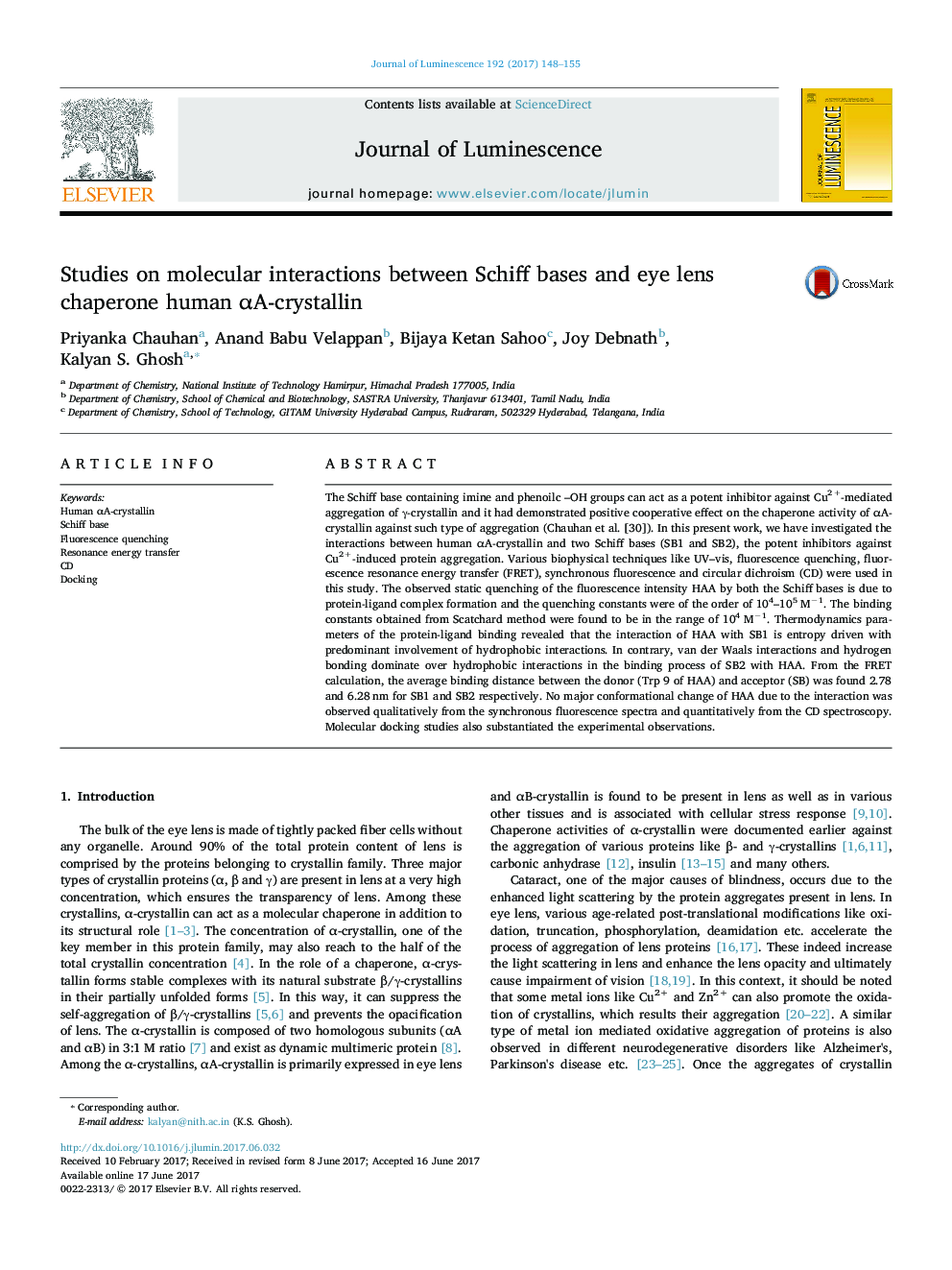| Article ID | Journal | Published Year | Pages | File Type |
|---|---|---|---|---|
| 5397379 | Journal of Luminescence | 2017 | 8 Pages |
Abstract
The Schiff base containing imine and phenoilc -OH groups can act as a potent inhibitor against Cu2+-mediated aggregation of γ-crystallin and it had demonstrated positive cooperative effect on the chaperone activity of αA-crystallin against such type of aggregation (Chauhan et al. [30]). In this present work, we have investigated the interactions between human αA-crystallin and two Schiff bases (SB1 and SB2), the potent inhibitors against Cu2+-induced protein aggregation. Various biophysical techniques like UV-vis, fluorescence quenching, fluorescence resonance energy transfer (FRET), synchronous fluorescence and circular dichroism (CD) were used in this study. The observed static quenching of the fluorescence intensity HAA by both the Schiff bases is due to protein-ligand complex formation and the quenching constants were of the order of 104-105 Mâ1. The binding constants obtained from Scatchard method were found to be in the range of 104 Mâ1. Thermodynamics parameters of the protein-ligand binding revealed that the interaction of HAA with SB1 is entropy driven with predominant involvement of hydrophobic interactions. In contrary, van der Waals interactions and hydrogen bonding dominate over hydrophobic interactions in the binding process of SB2 with HAA. From the FRET calculation, the average binding distance between the donor (Trp 9 of HAA) and acceptor (SB) was found 2.78 and 6.28 nm for SB1 and SB2 respectively. No major conformational change of HAA due to the interaction was observed qualitatively from the synchronous fluorescence spectra and quantitatively from the CD spectroscopy. Molecular docking studies also substantiated the experimental observations.
Related Topics
Physical Sciences and Engineering
Chemistry
Physical and Theoretical Chemistry
Authors
Priyanka Chauhan, Anand Babu Velappan, Bijaya Ketan Sahoo, Joy Debnath, Kalyan S. Ghosh,
